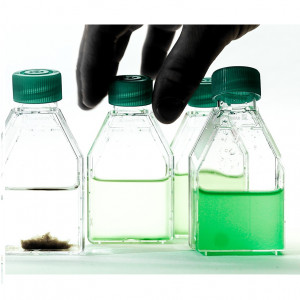| Swedish Algae Factory |

| Registration Date | 9 Aug 2018 |
| Revision Date | 9 Aug 2018 |
| Share |
Renewable Energies Solar Cells
Solar ShieldDiatom
NanocapsuleSilicon dioxide
SiO2 Nanoporous CAS Number : 7631-86-9
The group of algae we are utilizing in our processes are called diatoms. Diatoms are encapsulated by a nanoporous mechanically stable silica frustule. The silica frustule constitutes of three layers of nanoporous material. Each layer with its own specific nanopore size. The top layer has a larger nanopore size and the inner layer has the smallest nanopore size. The pores in the different layers are intertwined through channels in a funneled structured. This funneled channels are naturally designed to transport necessary nutrients and light into the algae cell in an efficient way.
This nanoporous silica material could in the future be utilized in a lot of different industrial applications. At the moment we at Swedish Algae Factory are focusing our efforts on the potential of the material as a solar cell efficiency enhancing nanomaterial. It has been shown that by adding a diatom frustule layer on top of silicon based solar panels the efficiency of the solar panel can be enhanced significantly, by more than 4% in lab tests. When adding the material into a future type of solar panel (DSSC) the efficiency of that solar panel was enhanced by 60% in lab tests.
This is not that surprising, since the material is naturally designed to trap light in the most efficient way to secure the survival of the algae, especially in the case of the diatoms that Swedish Algae Factory are cultivating that naturally grow well in low light conditions. If you are going to be able to survive on photosynthesis in low light condition you need to be really efficient at trapping the little light you are exposed to. Luckily a couple of hundred million years of Research and Development efforts in the form of evolution made this possible.
This material can not only be utilized to enhance the efficiency of solar panels. Its unique structure was also evolutionary developed to block UV light, which makes the material interesting for use as a UV filter in e.g. plastics and sunscreens. This material also needs to be able to take up and release chemical substances efficiently in order for the algae to surive. A trait that can be utilized in a variety of applications.